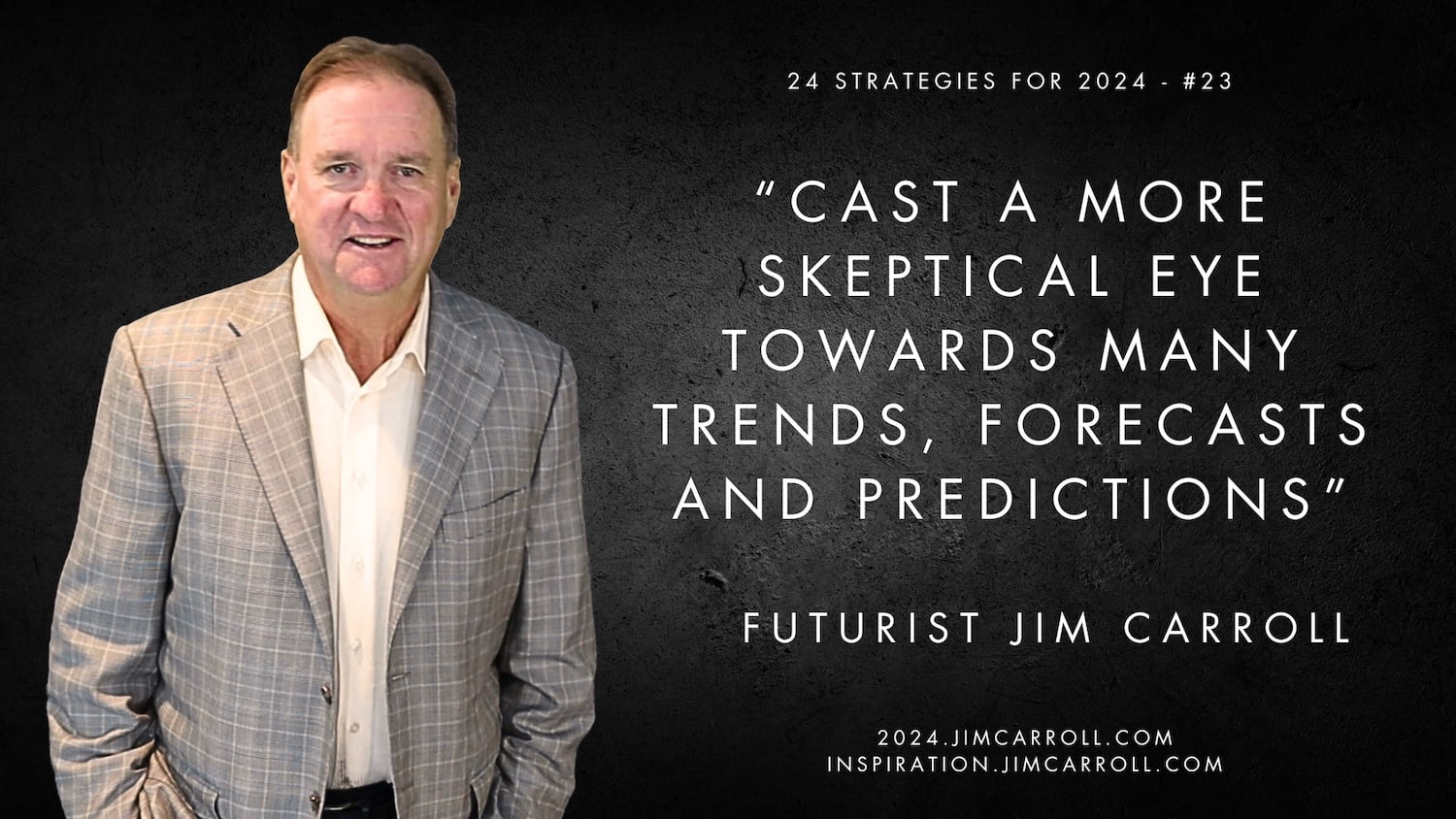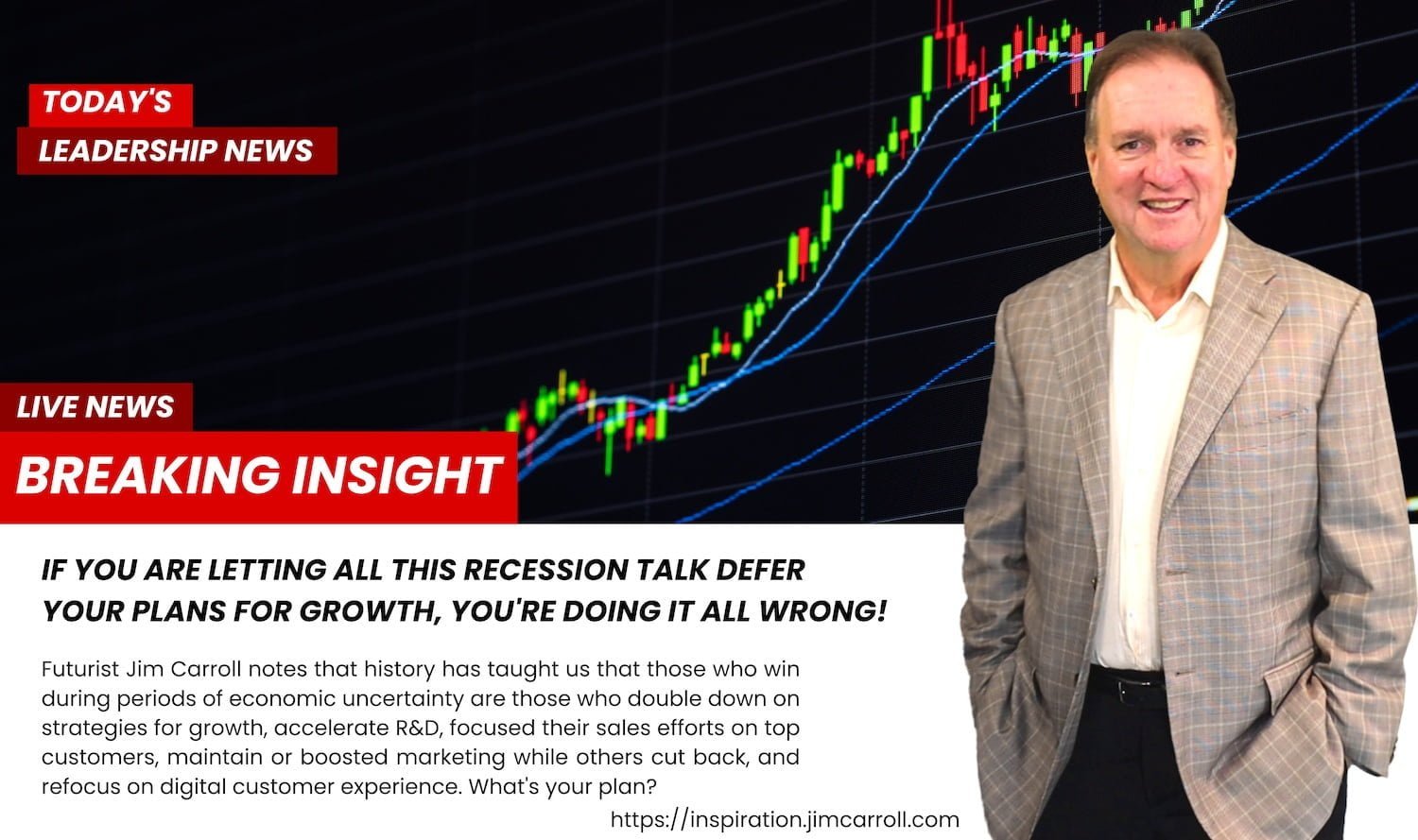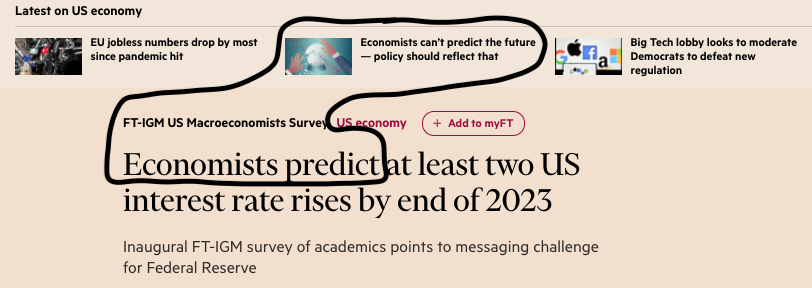“Cast a more skeptical eye towards many trends, forecasts and predictions” – Futurist Jim Carroll

Futurist Jim Carroll is running a series that began November 27, 2023, and will end on January 1, 2024 – ’24 Strategies for 2024.’ Rather than running a trend series for the upcoming year as he has previously, this series will examine a number of his personal beliefs on how to best align yourself with the future. There will be a post each weekday, excluding weekends and holidays, until the series runs its course. You will find it on his blog at https://blog.jimcarroll.com, or on the website https://2024.jimcarroll.com
You need to be a little more skeptical of predictions about tomorrow.
Trust me, as a futurist who makes his living advising people of my predictions for tomorrow, it pains me to write that sentence – but I’ve been thinking about this strategy for quite some time.
Much of this mindset has come from the rather dismal record of forecasting by economists and financial pundits in the last few years; after all, it was just over 14 months ago that Bloomberg predicted – with 100% certainty — that we would see a recession in 2023.

It never happened, of course.
The darned global economy kept chugging along, with month after month and quarter after quarter of continuous growth. Yet at the same time, global economic forecasters and financial pundits kept peddling their forecasts of doom and gloom, almost seeming to will for it to happen – and then seemed apoplectic and angry when it never transpired!
This, of course, caused me to work this observation into my Daily Inspiration post some months ago, observing that if you were basing your strategies for the future based on their forecasts, you were making a big mistake.

I long ago concluded that this particular class of tomorrow forecasters often had no real clue in what was happening, taking great delight in this particularly contradictory newspaper cover page, indicating that while economists are busy predicting one thing, an opinion piece suggests that they have no real ability to do that. Perhaps 2023 has proven this latter observation to be correct.

Failed predictions and missed forecasts? I got to thinking about the issue of failed forecasting in the last few days, as I have watched global meteorologists try to make sense of the current weather conditions in North America and increasingly, it seems, fail to do so.
Case in point – as I write this, I’m at my ski chalet, enveloped in fog. Everyone who skis in North America knows that it has been a dismal season, full of mud runs, heavy rain, and abnormally high temperatures. Those of us who want to try to understand when this misery might come to an end turn our attention to the long-range weather forecasters. They’re the specialized set of experts who try to interpret the many different weather models to figure out what is happening with the jet stream, ocean temperatures, and more to have a sense of what might transpire two to three weeks out.
It’s been challenging watching them this year since the only conclusion I can come to is that many are admitting their confusion about what is going on with the weather. As the forecasted winter arrival keeps getting pushed out, they seem to be busy trying to figure out why their previous predictions were in error – and worse yet, commenting often that ‘the models don’t make sense.’ What does that last bit mean? Our world of meteorology today relies upon several vast supercomputer models – the GFS, NAMS, ECMWF, UKMET, and others. These models undertake specific ‘runs’ – or model forecasts – with forecasted jet stream patterns, high and low-pressure zones, wind speeds, and more. Interpreting these many different models is an art.
And it seems the models are simply not making sense anymore. Case in point – these maps are from one particular weather model, predicting North American temperature anomalies one month out. These two maps come from the same computer model run 24 hours apart. The first suggests abnormal cold for all of North America.

But 24 hours later, the same model suggests abnormal heat for a large portion of North America.

The first thing you learn about meteorology is that trying to predict actual temperature trends a month out is nearly impossible. and so these maps have little to no value. Most of these forecasters simply don’t rely on this particular set of data that far out since they know it will be notoriously unreliable. And yet, to see such variation in a computer model is rather stunning. To me, as an untrained observer watching this industry in real-time, it also seems as if their ability to interpret the weather is breaking down, as, the models they rely upon almost seem to be making no sense anymore. That’s worrisome – perhaps our ability to accurately forecast tomorrow is breaking down at the very time that these models are subjected to new risks because of the climate crisis.
Back to the future – we all know that the business of predictions and forecasts has long had a rather shady and volatile track record and that history is littered with failed predictions. Let’s reprise just a few:
- “I cannot conceive of any vital disaster happening to this vessel. Modern shipbuilding has gone beyond that” – Edward J. Smith, captain of the Titanic
- “There is no danger that Titanic will sink” – Phillip Franklin, vice president of the White Star Line
- “X-rays will prove to be a hoax” – Lord Kelvin, President of the Royal Society
- “I predict the Internet will soon go spectacularly supernova” – Robert Metcalfe, 1995
- “The Americans need the telephone, but we do not. We have plenty of messenger boys” – Sir William Preece, Chief Engineer, British Post Office, 1878
- “There is no reason anyone would want a computer in their home” – Ken Olson, president, chairman, and founder of Digital Equipment Corp., 1977
- “These Google guys, they want to be billionaires and rock stars and go to conferences and all that. Let us see if they still want to run the business in two to three years” – Rob Wrubel, former CEO of Excite, 1999
Oops.
What’s going on? I’m increasingly wondering about that, and am coming to several conclusions – I think there is the interplay of many different factors happening all at once.
First, there are a greater number of ‘tomorrow’ experts, many of dubious quality, out on social media and within networking circles – social media has permitted so many more people to present their expertise about tomorrow to the world. A flood of insight with few parameters on quality makes it extremely difficult to separate the realistic predictions from the bogus; it makes it complex to separate the noise and the low-quality insight from predictions that might matter.
Second, perhaps there is an over-reliance on models that no longer make sense – whether it be with the weather, global economies, demand forecasting, or consumer behaviour. We live in a world in which volatility is the new normal, and it might be the case that models built upon presumptions of clarity no longer fit within our crazy turvy world. That’s worth thinking about.
Third, there is the fact that there is simply too much information to figure out what is going on anymore – we are drowning in insight, publications, forecasts, social media posts, and now, AI-generated content. How can we ever figure out clarity if we cannot interpret the lack of insight?
Fourth, there is the bias towards ‘relentless doomsterism.’ The impact of failed economic headlines? The interesting thing is that so many people seem to rely on such failed forecasts. Throughout the year, I saw countless organizations pull back, scale back, defer initiative, pause plans, wait for clarity, and put on the brakes. All of them now look rather embarrassed, sheepishly admitting that they were acting like sheep.
And yet, some of that mindset remains – in that vein, the Washington Post weighed in on the national mood in the US – despite the current reality that they are in the best financial and economic circumstances in decades, doom and gloom manage the mindset.

So what is my point with all of this? I think in the last few years, something has changed with the entire industry of ‘future forecasting,’ and so in 2024, it might be worth your while to be somewhat more skeptical of what you see.
That’s why this is Strategy #23 of my 24 Strategies for 2024 series.

Cast a bit more of a jaded eye on the words of wisdom of tomorrow from those you follow!
Including, perhaps, me! Or, maybe not. I’m not sure – I can’t predict what might happen!




GET IN TOUCH
Jim's Facebook page
You'll find Jim's latest videos on Youtube
Mastodon. What's on Jim's mind? Check his feed!
LinkedIn - reach out to Jim for a professional connection!
Flickr! Get inspired! A massive archive of all of Jim's daily inspirational quotes!
Instagram - the home for Jim's motivational mind!